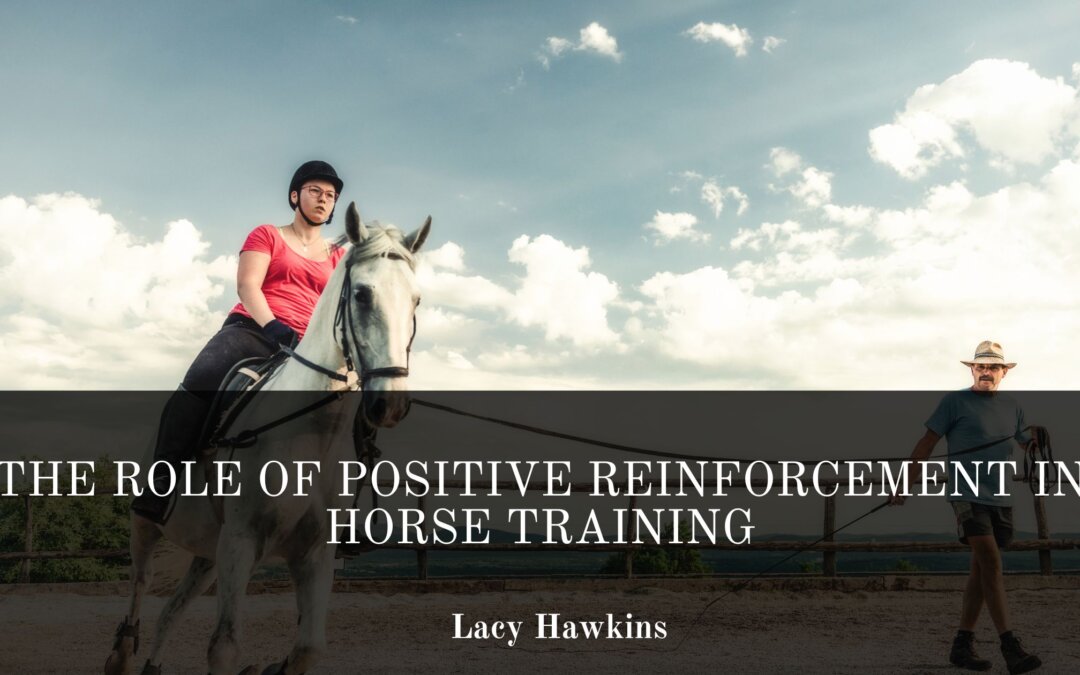Positive reinforcement has become a cornerstone of modern animal training, and its application in horse training is gaining popularity. This method, based on rewarding desired behavior rather than punishing undesirable actions, encourages horses to learn more effectively, willingly, and with less stress. In horse training, where trust and communication between the horse and rider are crucial, positive reinforcement offers a humane and practical approach to fostering a strong partnership.
1. What is Positive Reinforcement?
Positive reinforcement involves rewarding a horse immediately after it performs a desired behavior. This reward, often a treat, pat, or verbal praise, increases the likelihood that the horse will repeat the behavior. The key principle is to reward what you want the horse to do, reinforcing good behavior rather than focusing on mistakes.
In contrast to traditional training methods that may rely on negative reinforcement or punishment, positive reinforcement encourages learning in a supportive, low-stress environment. This approach helps build a horse’s confidence and strengthens the bond between horse and rider.
2. Building Trust and Reducing Fear
One of the main benefits of positive reinforcement is that it builds trust between the horse and the trainer. Horses are prey animals, naturally wary of anything unfamiliar. Positive reinforcement helps the horse associate training sessions with positive experiences, reducing fear and anxiety. Instead of dreading work, the horse looks forward to training, knowing it will be rewarded for its efforts.
Traditional methods that rely on pressure or punishment can create tension, leading to fear-based reactions in horses. This can damage the horse-human relationship and lead to behavioral issues like bolting, rearing, or refusing to cooperate. In contrast, positive reinforcement fosters a trusting partnership where the horse feels safe and motivated.
3. Encouraging Willingness to Learn
Positive reinforcement taps into a horse’s natural curiosity and desire to learn. When rewarded for correct actions, horses are more likely to engage with the training process and try to figure out what is being asked of them. This willingness to learn makes training sessions more enjoyable for both horse and rider.
With positive reinforcement, the horse is actively involved in its learning. Instead of simply following commands to avoid discomfort, the horse learns to associate certain behaviors with rewards, making it more likely to offer those behaviors without being prompted. This leads to a more enthusiastic and cooperative attitude.
4. Improving Retention of Learned Behaviors
Studies have shown that animals trained with positive reinforcement tend to retain new behaviors more effectively than those taught with punishment or negative reinforcement. Positive reinforcement creates a strong association between the desired behavior and the reward, making it easier for the horse to remember and repeat the behavior in future sessions.
Additionally, since positive reinforcement creates a low-stress learning environment, horses are more relaxed and focused during training. This mental state is conducive to learning and helps horses retain new information better than if they were anxious or fearful.
5. How to Use Positive Reinforcement in Horse Training
Incorporating positive reinforcement into horse training is relatively simple. The most common method is a reward marker, such as a clicker, followed by a treat or praise. The clicker tells the horse the exact moment it performed the desired behavior, helping it understand what action is being rewarded.
Timing is critical in positive reinforcement. The reward must be given immediately after the desired behavior to create a clear connection in the horse’s mind. Consistency is also key—reward the behavior every time it occurs during the early stages of training to reinforce the learning.
Conclusion
Positive reinforcement is a powerful and humane tool in horse training. By rewarding desired behaviors, trainers can build trust, reduce fear, and encourage horses to learn willingly and confidently. This method improves the horse’s understanding of commands and strengthens the bond between horse and rider. Whether working with young horses or seasoned competitors, positive reinforcement can lead to more successful, enjoyable training sessions for both horse and trainer.
